Snacks, Bakery & Confectionery Report 2022







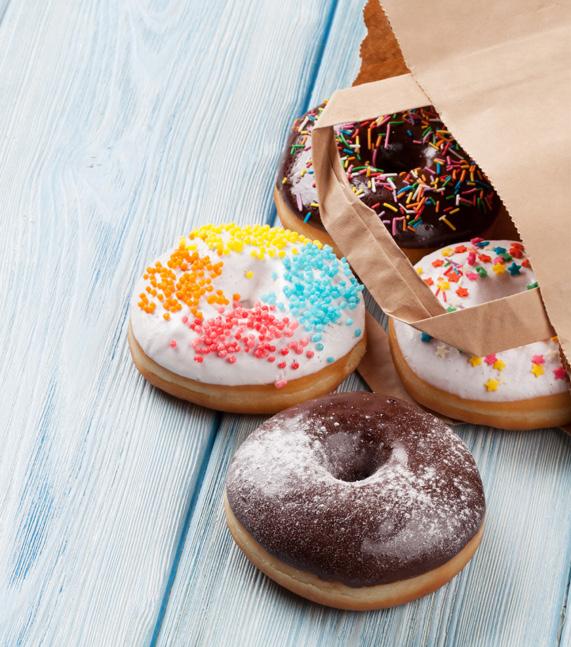
Reformulation to reduce levels of the ‘unholy trinity’ – salt, sugar, and fat – has long been an objective of the snack, bakery and confectionery industries
With rising rates of overweight, obesity and type-2 diabetes, public health policy has also been pushing the industry in this direction, with measures such as sugar taxes or the voluntary use of front-of-pack nutrition labelling, and the UK’s traffic light system or NutriScore in France, Belgium, and other countries.
In the UK, advertising for high fat, salt, and sugar (HFSS) foods was banned on London public transport, resulting in a 6 7% drop in average weekly consumption of energy from HFSS products, according to a study published in PLOS Medicine. Out of all products classified as HFSS, chocolate and confectionery fell the most, falling by nearly 20% 1
Sugar reduction is therefore a high priority for brands According to Mintel, 43% of German consumers say that a key attribute of the perfect sweet biscuit is it being ‘not too sweet’ while 57% of UK consumers say they are interested in reduced sugar or sugar-free sweets that have no artificial sweeteners.
While sugar is primarily used for its role as a natural sweetener, it also performs many other functions In bakery products, for instance, is a plasticizer, humectant, bulking agent, and also plays a role in starch gelatinization and swelling, and protein denaturation 2 This means that reducing sugar can be challenging Brands can combine alternative sweeteners, such as stevia or sucralose, with other functional ingredients such as inulin, fibres, and maltodextrins to achieve similar functional properties.
Increasingly, brands can use algorithm-powered digital tools to aid them in this challenging task Researchers at Wageningen University have developed a sugar reduction tool to identify the best parameters for effective sugar reduction without impacting taste and texture
“In recent years, [we] have been investigating functionality of sugars and other functional ingredients, such as starches, proteins, and fibres, present in bakery products intensively from a physicochemical perspective. The interactions between ingredients are described and quantified during the main production steps, like mixing, baking, and cooling. Understanding the physicochemical principles which control the transformation of a cake batter or biscuit dough into the baked product, makes it possible to set up quantitative formulation guidelines that allow efficient reformulation.”
“All this knowledge is implemented into a digital tool, in which possible formulations are calculated with the use of algorithms. This allows us to assess and select the most promising formulations for successful sugar reduction in that specific product. Additionally, specific targets such as energy content, fibre enrichment, calorie reduction, glycaemic index can also be taken into account. Using the tool can largely speed up the reformulation process. Using the predictions from the digital tool leads to a smaller range of experimental trials to find the formulation which best resembles the original product.”
Recent ingredient innovations are also opening up doors for product developers Uptake of the natural sweetener stevia, for instance, has been held back by an unpleasant, metallic aftertaste However, last year, the European Commission approved use of the enzymatically converted stevia molecule, Reb M, for use in the EU 3 Rebaudioside is one of the best-tasting stevia molecules but is present in the leaf in such tiny quantities that large-scale extraction is expensive
Startups and researchers have also been exploring the potential of several naturally occurring sweet-tasting glycoproteins for some years Some are using precision fermentation to scale up production of brazzein, the smallest sweet-tasting protein that is isolated from the West African climbing plant, oubli (Pentadiplandra brazzeana) Brazzein is 1,200 times sweeter than sugar, contains zero calories and is pH and heat stable 4
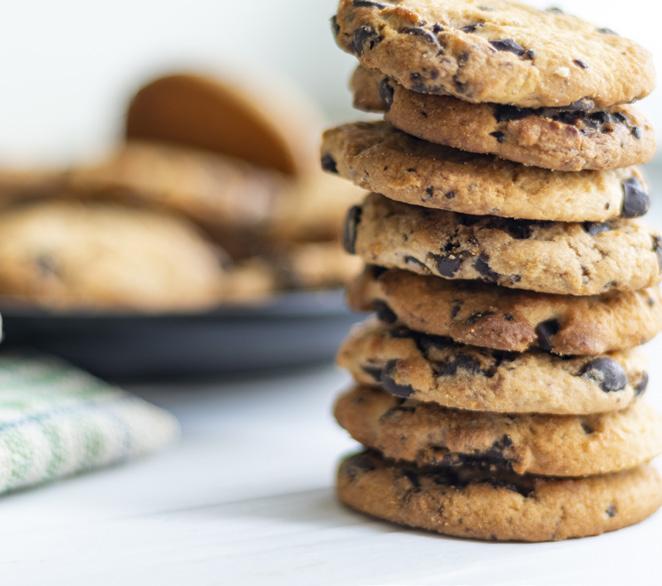
preview mag ad2.pdf 1 08/11/2021 15:30

Bakers can leverage new knowledge of gut health by highlighting the fibre content of their products. In the UK, nearly one-third (31%) of bread shoppers agree that a high fibre content is one the most appealing factors when buying bread
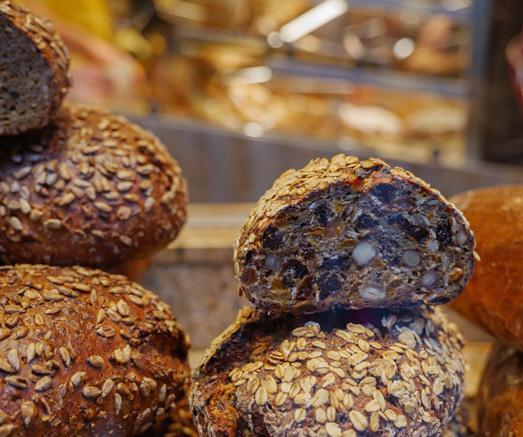
High-fibre claims resonate particularly well with senior shoppers, but younger consumers are growing more knowledgeable about the health benefits associated with a high-fibre diet. Mintel data shows that, in Spain, as many as 22% of bread launches featured high-fibre claims during 2021 while the average fibre content of products making a claim is also increasing
“Historically, fibre has been positioned as something of a necessity,” says Mike Hughes, head of research and insights at FMCG Gurus.
“Whilst it is certainly true that fibre is a vital ingredient within a healthy diet, bakery brands must take inspiration from the protein market. That is, leading a healthy lifestyle must be positioned around being fun, stylish, and aspirational as opposed to obligatory.”5
In Denmark, Schulstad expanded its Levebrød range with breads containing five sources of fibre from chia seeds, rye, apples, blackcurrants, and chicory root. The products contain between 11 and 12g of dietary fibre per 100g, which the manufacturer says can help digestive wellness and boost overall wellbeing
In the UK, the Modern Baker launched a ‘superloaf’ sliced bread that it claims is as healthy as eating fresh vegetables. The packaged loaf contains 12 high-fibre, plant-based ingredients, is additive-free, and has won the praise of high-profile microbiome researcher, Dr Tim Spector.6
Nurturing a healthy digestive system is increasingly seen as part of a holistic approach to health. According to Innova Market Insights, 47% of global consumers believe a healthy digestive system can improve mood and emotional wellbeing and 46% think it can reduce stress 7
A growing body of scientific research is backing this up. The gut-brain axis describes the communication that occurs between the gut and the brain via neurotransmitters, which convey messages using chemical pathways, and suggests that the food we eat can impact the gut microbiome, impacting mood and emotional well-being 8
Some brands are already leveraging the gut-brain axis UK brand Bio & Me makes granola that contains 15 different plant-based ingredients for gut diversity, such as oats, chicory, sorghum, chia, linseed, quinoa, and pumpkin seeds Its website tells consumers that good gut health can help with better mental health and that it is a question of “looking after your […] happiness from the inside out” 9
Recently, Unilever began a research partnership to identify the prebiotic ingredients, such as dietary fibres and some polyphenols, that can benefit the gut-brain axis, with a view to adding these ingredients to its portfolio 10
Although confectionery is seen as an indulgent category, better-foryou functional chocolate and confectionery is growing in popularity around the world, with brands adding active nutrients to provide a health boost
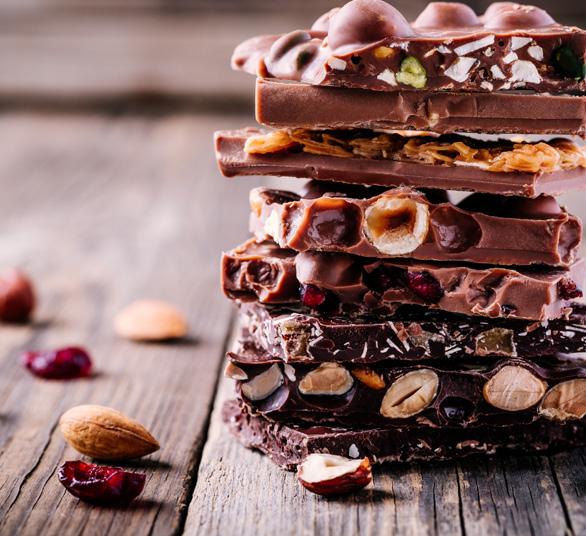
According to Innova Market Insights, ongoing concerns about Covid-19 will continue to fuel demand for immune health ingredients
“Immunity boosting ingredients will play a significant role for the coming year, with awareness of the antioxidant content and potential immune health benefits of snacks featuring dark chocolate and so-called superfruits, as well as the use of vitamins and zinc in hard candy and gummies,” says Innova.11
Such innovations are being seen around the world South African brand Z! Zang relaunched The Power Up functional chocolate with added theobromine and guarana for energy and focus while in the US, Kuli Kuli makes a dark chocolate snack that it describes as both nourishing and indulgent thanks to the inclusion of superfood ingredients from around the world, such as moringa, maca, chia and quinoa
Meanwhile, using real fruit to flavour sugar confectionery can leverage healthy associations, particularly as fruit flavours remain the most popular for sugar confectionery products, according to Mintel. Brands can inform consumers that the product is made using fruit juice or real fruit UK company Candy Kittens, for instance, launched a range of gummies made with real fruit juice available in flavours that appeal to adults, such as blood orange and pomegranate The gummies are also vegan and free from gelatine Botanicals with perceived health benefits are also helping chewing gum brands to revive ailing sales.12 With millions of people locked down around the world, the Covid-19 pandemic caused a decline in chewing gum sales, prompting manufacturers to find ways to add value, such as ingredients that relieve stress. In the UK, The Sweet Botanist launched a peppermint-flavoured gum that can help people feel calm thanks to 45mg of CBD oil Such ingredients can appeal to gum users, particularly as 29% of UK chewing gum consumers chew gum to help relieve stress, according to Mintel 13
Market researchers agree that protein claims add a health halo to almost any category – including baked goods, sweets, chocolate, and snacks
“Beyond sugar, protein is the other macronutrient attracting most attention in ‘betterfor-you’ sweet treats,” says Innova Market Insights.14
“Protein is a good fit with dairy desserts but also adds health value to some confectionery and sweet bakery products. Even some well-known sports nutrition brands are exploring opportunities in high protein biscuits and chocolate products.”
What kind of format do you like to see high-protein snack products? (2021) Cake/muffins Cookies/biscuits
FMCG GurusTwenty-seven percent of US consumers who eat cookies perceive high protein as being an important feature that makes a cookie healthier, according to a Mintel survey, and added protein claims fit will with energy and granola bars
Although fortification is something that creates opportunities within the bakery market, FMCG Gurus warns that brands must proceed with caution
“Consumers are being more attentive to ingredient listings than ever before, brought about by increased health and safety concerns. As such, it is crucial that consumers feel fully reassured that any fortification has not been done artificially or chemically,” says Mike Hughes of FMCG Gurus.15
Some brands look to sources of protein that are popular locally Indonesian brand IniTempe launched artisan cookies available in coconut, chocolate and ginger flavours made with tempeh, a fer mented soy product that hails from Indonesia IniTempe describes the cookie as a natural protein source and superfood
Source:Bean-based snack brands can appeal to health-conscious consumers with high-protein and high-fibre options, and a growing number of crisp and chip brands are starting to add pulses, such as lentils, to products that are otherwise seen as unhealthy and high in fat Recently launched examples include Migros’ sweet chili lentil chips in Switzerland or the UK’s Eat Real, which launched chili and lemon flavour lentil chips
“For many reasons, pulses should be an obvious choice for manufacturers of bakery, snacks and cereals who are looking to bolster the ‘plant power’ halo of their products,” says Katya Witham, senior food and drink analyst at Mintel. “Pulses are widely recognised and accepted by consumers globally as a plant-based source of protein and other nutrients. They can be grown sustainably and are generally cost-effective.”16


US brand Outstanding Foods makes a baked puffed rice snack With each product packing in 21g of protein (from pea and brown rice) as well as natural sources of vitamins and minerals that come from a blend of whole foods such as kale, squash, shitake mushrooms and kelp, the brand describes the product as ‘a meal in a bag’

Plant-based claims are exploding across countless categories, including confectionery, with some mainstream manufacturers launching vegan chocolate In the UK, Cadbury’s launched a ‘plant bar’ made with almonds, salted caramel, and sustainably sourced cocoa The chocolate bar is also sold in plant-based packaging
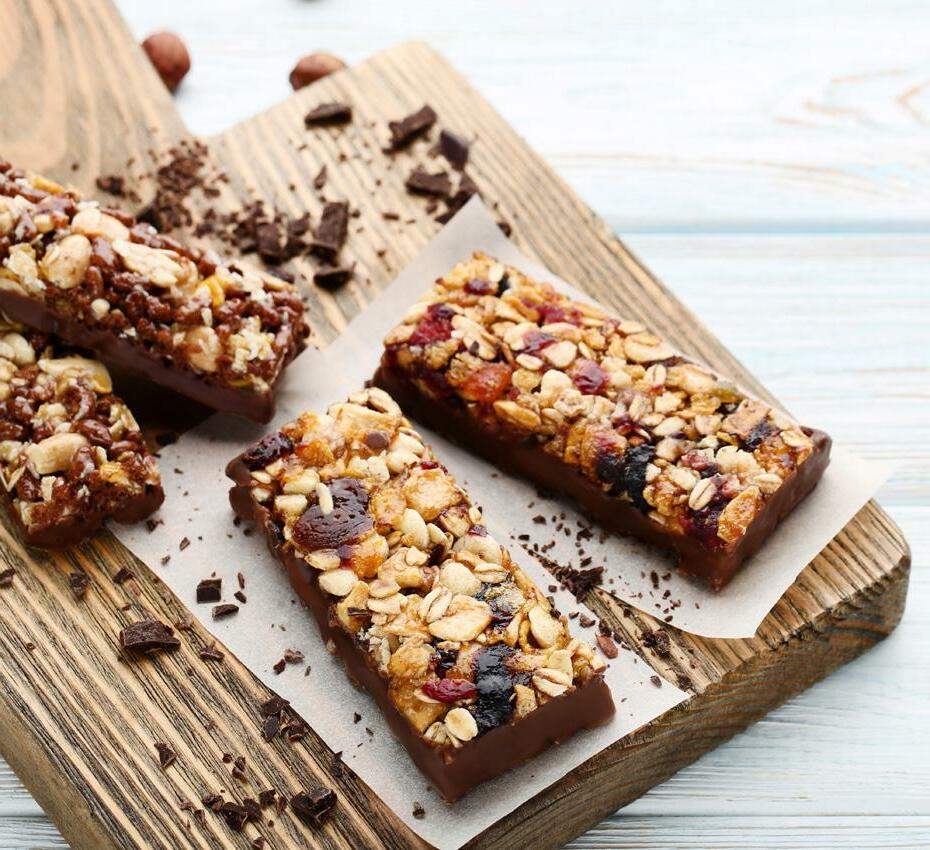
Nevertheless, Mintel notes that vegan and plant-based claims within the chocolate category remain niche and many are simply high-cocoa solid chocolate confectionery products made with cocoa butter that are inherently vegan
Plant-based claims are also beginning to appear on chewing gum Although traditionally, chewing gum is made from plant-based chicle, the chewy sap of the Sapodilla tree, modern versions of it typically contain plastic. Polyethylene, paraffin and synthetic resins are all FDA-authorised ingredients and additives in chewing gum, for instance 17
A survey commissioned by UK retailer Iceland found that 85% of UK consumers did not know chewing gum contained plastic,18 however, awareness of plastic pollution and the negative impact on both the environment and health is growing Recently, researchers found plastic microparticles in human blood in 80% of those tested 19 The appeal of natural, chicle-based and plastic-free gum could therefore grow Danish brand True Gum makes on-pack claims of being both plastic-free and sugar-free20 while UK chicle-
The popularity of gluten-free foods has exploded in recent years. Nevertheless, gluten-free products have suffered from the perception that they cannot deliver on the taste or texture of conventional bakery products
More than one in five (21%) of UK consumers agree that gluten-free foods are unappealing while almost half (48%) of German consumers say that taste is more important to them than the healthiness of cakes or cake bars, according to Mintel data
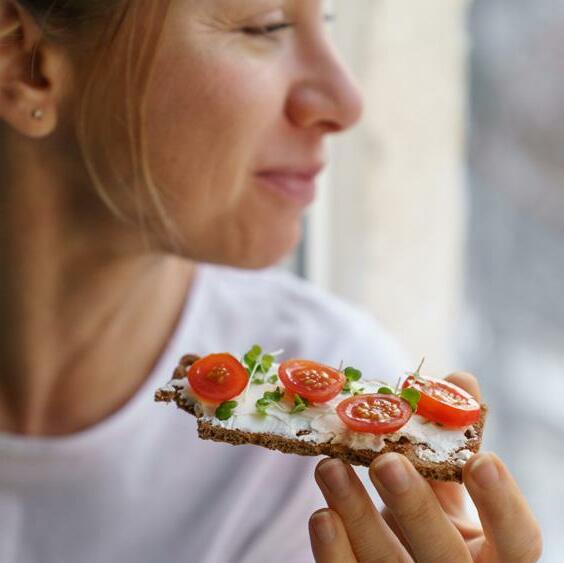
Nevertheless, R&D efforts have focused on overcoming the sensory challenges that result when gluten is removed from the matrix, and ‘next-generation’ gluten-free products are a marked improvement on earlier versions
Brands are also using a mix of different natural ingredients to replace wheat, including ancient grains and seeds that enjoy a heath halo Flours made from milled amaranth, buckwheat, corn, millet, quinoa, rice, sorghum, and teff can all be used for gluten-free baking 23 In the US, Soozy's uses a blend of cassava, almond, and flaxseed flour to make its gluten-free onion bagels, as well as tapioca starch and psyllium husk.
Pasta made from pulse flours, such as red lentil or green pea, are gluten-free and also high in protein and fibre. These can recreate the sensory attributes of durum wheat-based pasta while retaining a clean label ingredient list. Barilla’s gluten-free red lentil spaghetti is made with only one ingredient 100% red lentil flour.24
Although niche, the popularity of the ketogenic diet, which espouses a high-protein, medium-fat and lowcarbohydrate intake, has led to a number of baked product launches that are gluten-free because they are free from carb-heavy wheat
Despite the perceived healthiness of gluten-free products, a 2021 survey tested almost 800 products sold in Norway and found that the gluten-free products contained less protein and fibre, and higher amounts of saturated fat, carbohydrates and salt compared to gluten-containing products 25 This may be because food formulators add more salt, fat, or sugar to gluten-free products to compensate for the loss of sensory attributes when gluten is removed
“Gluten-free products are less nutritious and have a higher price compared to equivalent gluten-containing products,” concluded the Norwegian researchers. “[...] the nutritional quality of a gluten-free diet needs to be addressed and should be improved.”26
Fortifying products with micronutrients and ensuring lower levels of salt, fat and sugar could therefore be an area for action
Consumer interest in plastic-free packaging is growing, including for bakery, confectionery, and snack products Fifty-three percent of Polish confectionery shoppers said it was worth paying more for chocolate with environmentally friendly packaging, such as compostable wrappers, according to Mintel
“Bread is consumed daily, so the volume of packaging generated is receiving environmental scrutiny from consumers,” says Megan Stanton, senior analyst at Mintel.
“Brands have started to use sustainable packaging solutions but can continue to make recycling easier for consumers. Opportunities also exist to educate consumers on what to do with used bread bags, to improve the effectiveness of biodegradable and compostable packaging.”27
In 2020, Nestlé said it was investing £1.5 billion to accelerate the development of sustainable packaging solutions28 while in 2021, Mondelēz set itself the target of cutting virgin plastic use in rigid plastic packaging by at least 25% by 2025 29 In 2021, PepsiCo announced plans to make its plastic packaging from 50% of recycled materials and halve its use of virgin plastic by 2030 30

Smaller snack brands are innovating with new concepts of reusable packaging Scottish startup Unwrapped Bars makes small-batch energy bars made with gluten-free oats and nuts in reusable packaging Each bar is wrapped in organic cotton, coated with beeswax, which has natural anti-bacterial properties Consumers send their used wraps back to get washed and they always receive the same wrapper again to avoid crosscontamination 31
Follow our business channel on Linkedin for insights into our portfolio, product innovations and creative collaboration with customers worldwide.
Commodities such as palm oil, cocoa and sugar are key ingredients for snack and baked goods manufacturers, yet they have been linked to deforestation, leading to consumer concerns
Brands have sought to restore trust through third party certification, such as Fair Trade for cocoa, RSPO for palm oil, and Bonsucro for sugarcane but these do not always reassure. ‘No palm oil’ claims have gained traction in recent years, particularly in Europe 32
The EU has proposed a regulation on deforestation-free products, which aims to minimise consumption of products coming from supply chains associated with deforestation or forest degradation – and increase EU demand for and trade in legal and ‘deforestation free’ commodities and products 33
Environmental organisations have warned, however, that the legislation in its current form may not stop deforestation on the ground, instead serving to ‘clean’ specific European agri-commodity supply chains, while diverting commodities associated with deforestation to other export markets 34

The issue is complex and even brands that position themselves as leaders in sustainability and social responsibility have much work to do Dutch brand Tony’s Chocolonely, for instance, markets itself as slave-free chocolate but admits a child labour rate of 3 9% in its supply chain, compared to the industry average of 46 5% 35
If efforts to produce deforestation-free commodities such as palm oil and cocoa do not deliver, emerging technologies such as precision fermentation could step up and replace them Several startups are already operating in this space and producing palm oil and cocoa via microbial fermentation in laboratories Dutch startup NoPalm and US cocoa startup California Cultured are just two such companies.
NoPalm’s CEO and co-founder has said he wants its microbial oil to be “the standard alternative ingredient to palm oil”36 while California Cultured says that one of its major draws to consumers is its deforestation-free and child labour-free guarantee 37

“A total of 82% of consumers say that it is important that brands look to offset their carbon footprint,” says Mike Hughes of FMCG Gurus.
“Moreover, for many, it is not enough for brands to offset some of their carbon. Instead, brands should aim to be either carbon neutral, or carbon negative –offsetting more carbon than they produce. Concern around carbon emission can be linked to consumers witnessing damage to natural resources and rising temperatures and adverse weather conditions having an impact on food supply chains.”38
However, Hughes warns that consumers can also be sceptical of sustainability claims made by brands due to high profile cases of greenwashing.
“Given that 65% of consumers believe that brands should be doing more to protect the planet, it is crucial that bakery brands demonstrate sustainability initiatives along the supply chain and communicate this information in a simple and transparent manner,” Hughes adds.39
French brand T&C Terres & Céréales relaunched its organic chocolate & wholegrain wheat petals The company says the product is made in France with French wheat and fairtrade chocolate. It is rich in fibre and scores a B on the voluntary front-of-pack nutrition label, NutriScore.
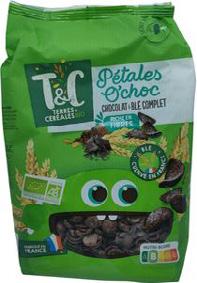
Source: Mintel Global Product Database
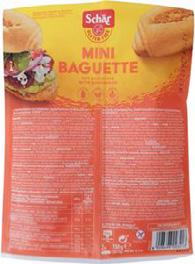
In the Netherlands, Schär launched a gluten-free mini baguette with sourdough formulated especially for people with gluten intolerance and rich in fibre. The ready to bake product can be oven heated for five to seven minutes to become crispy
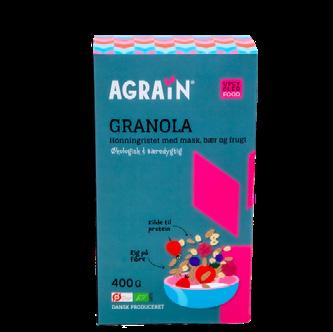
Source: Mintel Global Product Database
Danish company Circular Food Technology uses upcycled spent grain sourced from organic Danish microbreweries in products in its Agrain brand It launched a 'kid-friendly' berry granola made with its Stout Super Grain Flour. The upcycled flour gives a dark colour and adds flavour notes of rye and chocolate The granola also contains powdered Danish rosehip, blackcurrant and raspberry
Source: Agrain
US brand Cappello's launched a keto-friendly Buffalo Ranch pizza made with roasted cauliflower. The contains 'simple' ingredients, such as turnips, almond flour, cage-free eggs, flaxseed and roasted cauliflower, and is free from gluten, grains, soy and yeast, the brand says
Source: Mintel Global Product Database
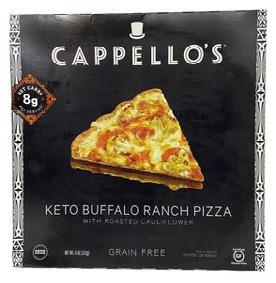
In Germany, Lindt redesigned its vegan chocolate made with oat drink powder, almond paste and hazelnut pieces The pack bears the Lindt Sprüngli cocoa farming programme logo and the European V-label vegan logo


Source: Mintel Global Product Database
US ‘adult confectionery’ brand Smith & Sinclair launched Party Alcoholic Cocktail Gummies under its Eat Your Drink brand in France The company says the sweets are mixed like a drink but consumed in two bites, and contain a blend of fruit, herbs, premium spirits and syrups, available in flavours such as Berry Daiquiri and Passion Fruit Mojito, with a maximum ABV of 5%
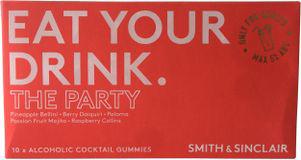
Source: Mintel Global Product Database
In the UK, Grenade launched a high-protein, low-sugar chocolate bar under its Carb Killa brand The bar contains 20 g protein, 1 7 g sugar and is made with dark chocolate chips
Source: Mintel Global Product Database

UK retailer Asda innovated on the flavour front with Korean Style BBQflavoured Hand Cooked Crisps. Described as sweet and smoky with a subtle hint of spice, the crisps are vegetarian, made with British potatoes, and free from artificial colours and flavours.
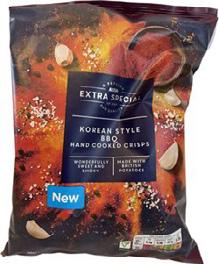
Source: Mintel Global Product Database

In Slovenia, Gluteno launched parmesan-flavoured gluten-free crisps made with red lentil flour. The snack contains 6% protein and is made with organic ingredients
Source: Mintel Global Product Database
In Italy, Conad Piacersi launched a wholefood healthy snack pack with pistachio, cranberry, Brazil nuts and walnut The fruit and nut mix provides 15% of the daily recommended amount of thiamine, which the company says contributes to the normal functioning of the heart
Source: Mintel Global Product Database
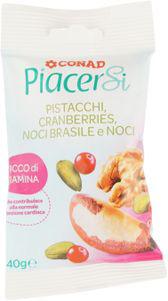
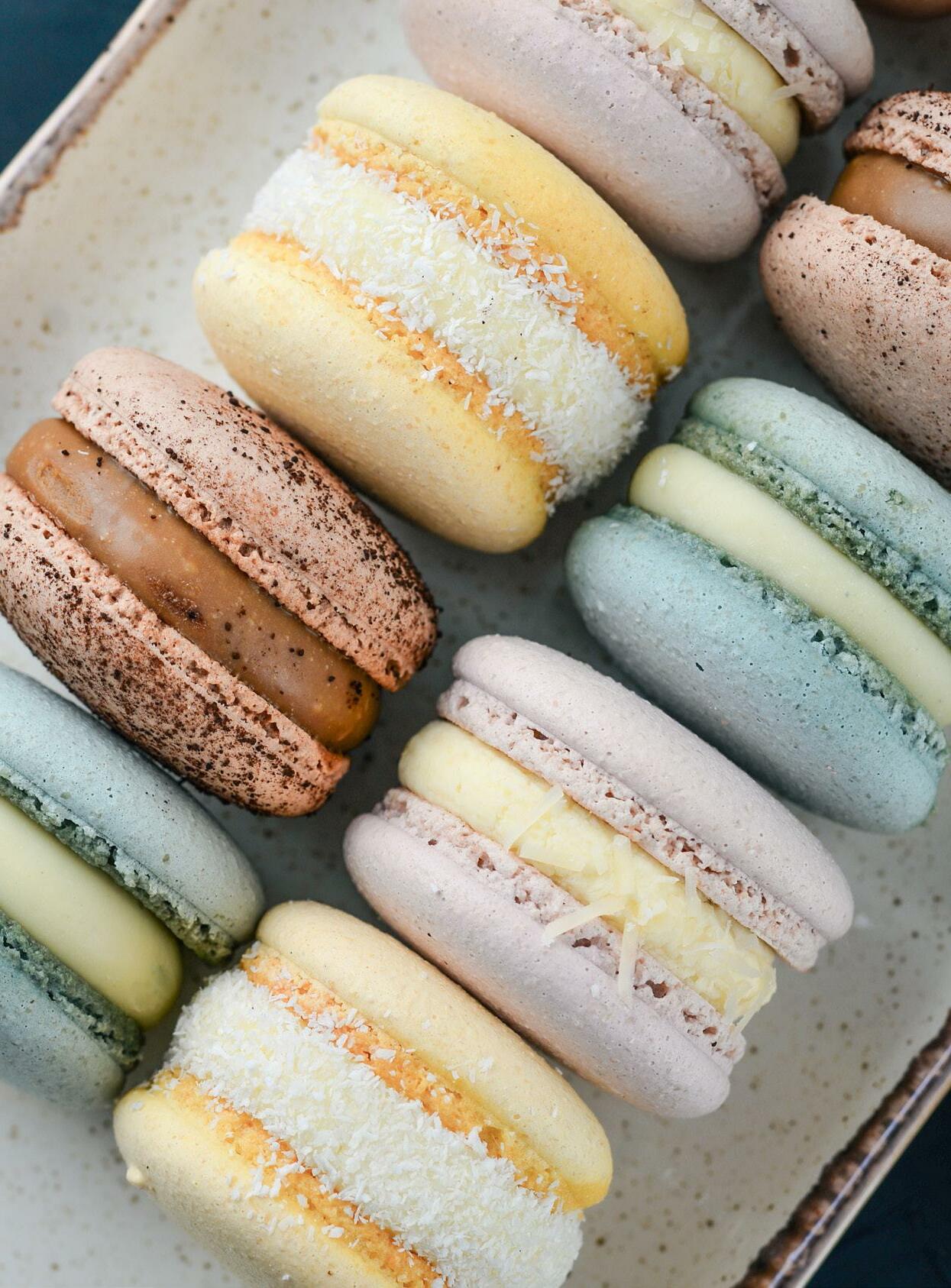
• Snacking has become a daily ritual for people around the world, creating opportunities for product development
• To meet consumer desires to follow a healthy diet, brands should aim to create healthy indulgent products However, this should not be done at the expense of taste
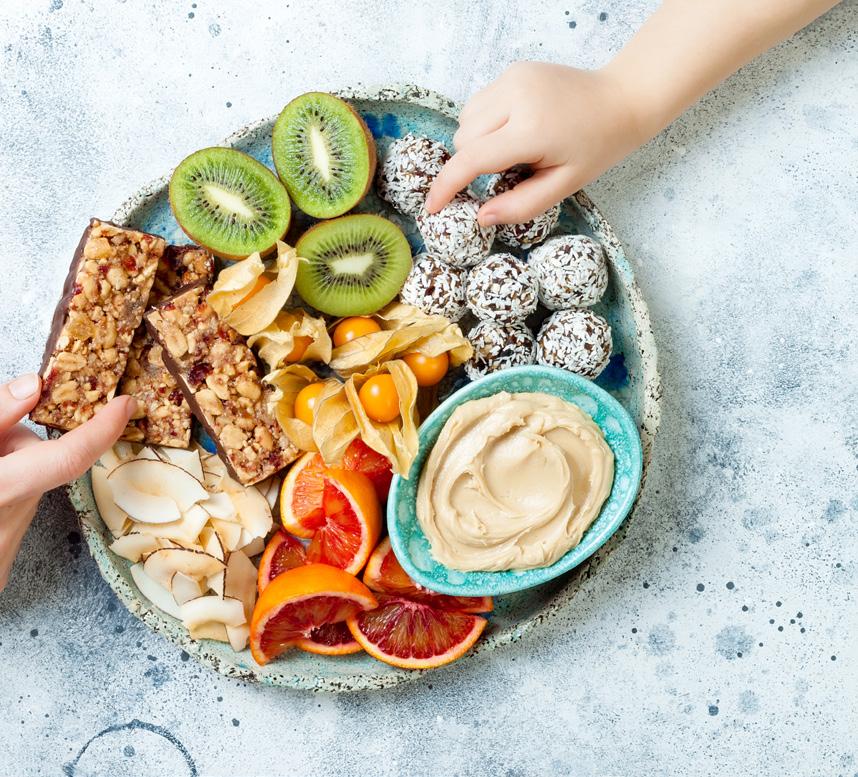
• Brands approach healthy reformulation either by reducing so-called ‘dietary evils’ such as sugar, salt and fat or by adding ‘virtuous’ ingredients, such as protein, fibre, and vitamins
• Plant-based based claims are appearing on a growing number of products from chewing gum and cookies to chocolate
• Ingredient innovations have led to vast improvements in the taste, texture, and functionality of glutenfree products However, nutritional content remains an area for improvement
• Third party certification for key ingredients such as cocoa, sugar, and palm oil can reassure consumers about sustainable sourcing
The information provided here was compiled with due care and up to date to the best of our knowledge on publication.
1 https://journals.plos.org/plosmedicine/article?id=10.1371/journal.pmed.1003915#sec0
2 https://insights.figlobal.com/fi-webinar-series/algorithm-powered-digital-sugar-reduction-interview
3 https://www.ingredientsnetwork.com/eu-approves-stevia-produced-via-enzymatic-news113714.html
4 https://insights.figlobal.com/processing-technology/precision-fermentation-producing-next-generation-protein-sweeteners
5 Snacking and Bakery, FMCG Gurus custom report 2022
6 https://www.ingredientsnetwork.com/bread-as-good-as-veg-modern-baker-makes-bread-news111650.html
7 https://www.innovamarketinsights.com/blog/trending-now-mental-and-emotional-wellbeing-targeting-the-feel-good-factor-and-specif ic-mood-needs/
8 https://foodandmoodcentre.com.au/2016/07/diet-and-the-gut-microbiota/
9 https://bioandme.co.uk/pages/about
10 https://insights.figlobal.com/health-wellness/gut-brain-axis-and-good-mood-foods
11 https://www.innovamarketinsights.com/press-release/sweet-snacks-innovation-boosted-by-successful-sustainability-storytelling/
12 https://www.candyindustry.com/articles/89218-2020-state-of-the-confectionery-industry-29b-gum-category-sees-declines-in-light-ofcovid-19-pandemic
13 ‘A year of innovation in sugar confectionery’, 2022, Mintel report
14 https://www.innovamarketinsights.com/press-release/cutting-sugar-and-boosting-protein-in-better-for-you-sweet-treats/
15 Snacking and Bakery, FMCG Gurus custom report 2022
16 https://www.mintel.com/blog/food-market-news/ingredients-to-watch-in-bakery-snacks-and-cereals
17 https://www.accessdata.fda.gov/scripts/cdrh/cfdocs/cfcfr/CFRSearch.cfm?fr=172.615
18 https://about.iceland.co.uk/wp-content/uploads/2018/08/Iceland-launches-plastic-free-chewing-gum-1.1.18.pdf
19 https://www.theguardian.com/environment/2022/mar/24/microplastics-found-in-human-blood-for-first-time
20 https://truegum.com/
21 https://nuudgum.com/
22 ‘Patent insights: emerging trends in gluten-free’, Mintel, 2021 23 https://www.beyondceliac.org/gluten-free-diet/baking/intro-to-flour/
24 https://www.barilla.com/fr-fr/produits/pates/legumineuses/spaghetti-de-lentilles-corail
25 https://www.ncbi.nlm.nih.gov/pmc/articles/PMC8009084/
26 https://www.ncbi.nlm.nih.gov/pmc/articles/PMC8009084/
27 ‘A year of innovation in bread & bread products, 2021’, Mintel report 28 https://www.nestle.com/media/pressreleases/allpressreleases/nestle-sustainable-packaging-transformation-journey 29 https://ir.mondelezinternational.com/news-releases/news-release-details/mondelez-international-commits-reduction-virgin-plastic-use 30 https://www.pepsico.com/news/press-release/pepsico-announces-strategic-end-to-end-transformation-pep-pepsico-positive09152021 31 https://unwrappedbars.com/pages/about-unwrapped
32 https://edepot.wur.nl/534833
33 https://ec.europa.eu/environment/publications/proposal-regulation-deforestation-free-products_en
34 https://www.proforest.net/news-events/news/eu-regulation-on-deforestation-free-products-recommendations-for-a-forest-positiveimpact-14180/
35 https://www.linkedin.com/posts/tony%27s-chocolonely_cadbury-dispatches-chocolate-activity-6917066737490235392-uMa1?utm_ source=linkedin_share&utm_medium=member_desktop_web
36 https://insights.figlobal.com/startups/nopalm-ingredients-creating-deforestation-free-palm-oil-interview
37 https://insights.figlobal.com/startups/creating-chocolate-without-cocoa-pods
38 Snacking and Bakery, FMCG Gurus custom report 2022
39 Snacking and Bakery, FMCG Gurus custom report 2022

